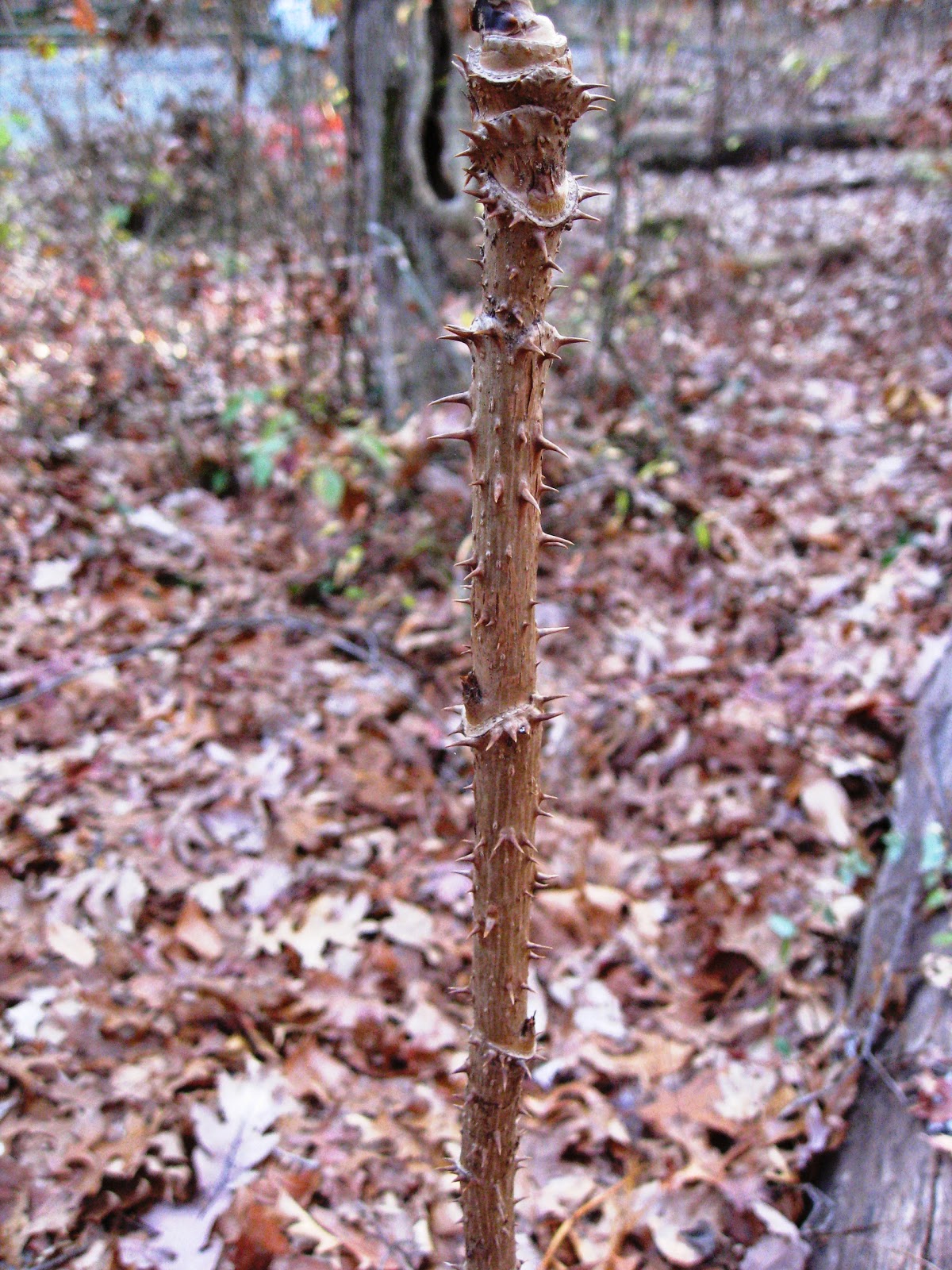 |
| A Devil's Walking-stick |
Among our strangest of shrubs is the Devil's Walking-stick (Aralia spinosa). There are a lot of peculiar traits to this common tree. It also known by a variety of different names, though most are also used used for other trees, in particular Zanthoxylum calva-herculis, leading to confusion. These include Hercules Club, Prickly Ash, Angelica Tree, Prickly Elder, Toothache Tree, Spikenard, Tearblanket, Pigeonberry, and Pigeon Tree.
Its most common name comes from the straight, very prickly trunk, which usually only has a single, branchless stem and rarely gets over 30' tall at best. They normally form small clumps of trees, with individual plants sending up new shoots around the parent plant. Damage to the roots and stems seems to encourage even more prolific suckering of new stems. This may be an adaptation helping the sun-loving tree react to forest fires and fallen trees to take advantage of the sun spots. |
| The fruit/flower stalk on this shrub is very colorful even after the berries have fallen off. |
The stems and trunks almost never have any branching and most of the growth is concentrated near the top of the plant, giving it a very unique appearance. It stands out in almost every season, whether because of its huge flower heads (up to 4' wide), brightly colored fruit stalks, prickly aspects (even the leaves have spines along many of the veins, thus the scientific epithet of spinosa), or huge berry clusters.
 |
| Berries (several already missing) and fruit stem. |
The berries do not last long, though they are not a preferred food choice for any particular creature that I'm aware of. Each berry contains 3-5 very small seeds in the middle of the juicy fruit. They can really stain clothes or your fingers. Individual plants generally do not produce flowers or fruits until after their 3rd or 4th year of growth. Some believe the fruits were a favorite of the now extinct Passenger Pigeon (and thus its other common names of Pigeonberry or Pigeon Tree), but that is debatable.
 |
| Most parts of the tree, even leaves, have prickles and spines. |
Devil's Walking-stick has the largest leaves of any tree in North America. They are so large as to appear to be branches, but in reality are giant, twice compound leaves. Some can be over 3' long and 2' wide. That they are actually leaves is evident when they fall off in the Autumn, leaving a very prickly single trunk to stand alone.
 |
| A single twice compound leaf, the largest of any of our trees. |
The large leaves serve as food for 8 different species of caterpillars and are heavily eaten at times by various beetles. Their prickly nature discourages browse by such creatures as deer. The finely chopped leaflets have been used when very young as potherbs, but others warn of their mildly toxic nature, especially if older or not well cooked. Some people even develop dermatitis from contact with any part of the plant at all.
 |
| Giant leaves in their Fall color, though yellow is more common. |
During the Civil War, Confederate doctor Francis Porcher was tasked with finding alternative medicines for those no longer available due to Union blockades. He noted that the bark could be used for chronic rheumatism, colic, syphilis, and the pain from dental cavities (thus another moniker of Toothache Tree). As a vomiting agent, he stated that it was "probably to be preferred to any emetic yet discovered among our native plants." In South Carolina, he said the plant was "the rattlesnake master par excellance" for treating snake bites. He was quite a supporter of its medicinal uses.
As can be seen, there is a lot to this shrub besides its unusual appearance. Something to keep in mind when running into this prickly character anytime in the year, but particularly this Halloween season.
No comments:
Post a Comment